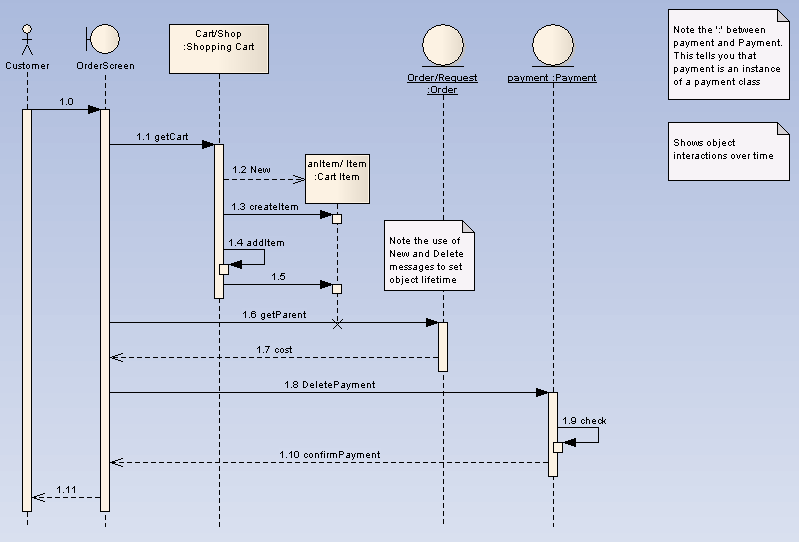Software Architects can use Enterprise Architect to map functional requirements with use cases, perform real time modeling of objects using Interaction diagrams, design the Deployment model and detail the deliverable components using Component diagrams.

Map Functional Requirements of the System
With Enterprise Architect the Software Architect can take the high level business processes that have been modeled by the Business Analyst and create detailed Use Cases. Use Cases are used to describe the proposed functionality of a system and are only used to detail a single unit of discrete work.
Map Objects in Real Time
The Software Architect can use Interaction diagrams (Sequence and Communication diagrams) to model the dynamic design of the system. Sequence diagrams are used to detail the messages that are passed between objects and the lifetimes of the objects. Communication diagrams are similar to Sequence diagrams, but are used instead to display the way in which the object interacts with other objects.
Map Deployment of Objects
The Software Architect can use Deployment diagrams to provide a static view of the run-time configuration of processing nodes and the components that run on the nodes. Deployment diagrams can be used to show the connections between hardware, software and any middleware that is used on a system.
Detail Deliverable Components
Component diagrams enable the Software Architect to model the physical aspects of a system. Components can be executables, libraries, data files or another physical resource that is part of a system. The component model can be developed from scratch from the class model or can be brought in from existing projects and from third-party vendors.
See Also


